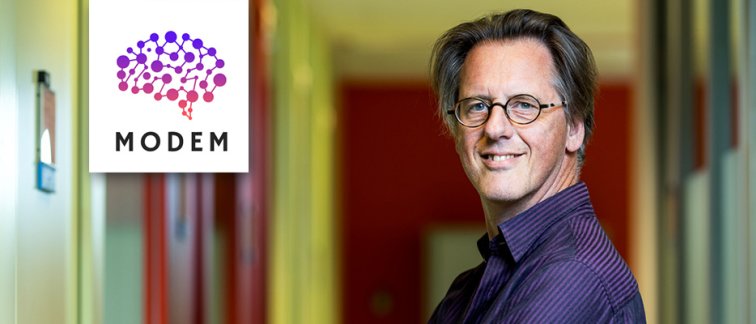Dementia is a term for several brain disorders involving memory loss and neurodegeneration, such as in Alzheimer's disease (AD) and fronto-temporal dementia (FTD). At the time of diagnosis, the disease process has long been ongoing. But where and when does it begin? The MODEM consortium aims to find the causes of dementia, by understanding the underlying mechanisms of dementia from different perspectives.
Improve treatment by finding the cause
There are probably multiple causes of dementia, and different types of dementia that in turn involve different mechanisms. This makes research understanding dementia very complex. Currently, we know that dementia is characterized in the brain through the accumulation of proteins inside and outside brain cells, causing cell stress, inflammation, and cell death. There are also problems with the blood vessels within the brain. Now, there is no effective treatment for dementia; better understanding of these mechanisms can lead to improvement in diagnostics, development of therapies, and thus better treatment.
Solving a gigantic puzzle
The strength of MODEM lies in the researchers: all 20 of them each have their own expertise, working on their own piece of the puzzle. By putting together all these different angles, they aim to find answers to an effective treatment for dementia. By looking at the causes and underlying mechanisms of AD and FTD, four main lines can be distinguished:
- The development of human models of brain cells and organoids, with a focus on interactions between different types of brain cells, such as glial cells and neurons. Understanding these interactions provides opportunities for novel therapeutic targets to arise in early diagnosis.
- Next to human models, research of postmortem tissue, and animal models is done to look at memory and pharmaceutical interventions/treatments. In these models, there will be a specific focus on synaptic function, neural circuitry and network impairments on the molecular and cell physiological level in memory.
- Using advanced imaging techniques, such as MRI and PET scans, to learn more about activity of neural networks and blood flow in the brain. This research line also focuses on biomarkers that can be found in the blood, and thus also in the bloodstreams of the brain.
- The last research angle is on data analysis and bioinformatics by looking for biomarkers in certain tissues that comes from existing and new data. Studying these big datasets may provide fast translation from fundamental data to patients and sped up drug discovery.
Connection between the lab, the clinic, and the patients
These four projects generate a lot of potential within the research field of dementia; for example, more knowledge is gained about the mechanisms of the disease itself, as well as opportunities for new treatments and therapies. Also, novel insights may emerge for better use of imaging techniques in diagnosis, as well as better identification of more specific forms of dementia. All this is supported by the search for the biomarkers using data analysis; with more and strong biomarkers, dementia can be diagnosed earlier with better perspective for treatment when becoming available.
Organization & collaboration
MODEM is part of ZonMW's Dementia Research Program, with MODEM fulfilling the Fundamental Research work package. MODEM is a national consortium, led by Prof. Dr. Guus Smit at the VU Amsterdam. Other partners involved in the consortium are Amsterdam UMC, Leiden UMC, UMC Utrecht, UMC Groningen, Radboud UMC, Erasmus MC, University of Amsterdam, Maastricht UMC and Prinses Máxima Centrum.

